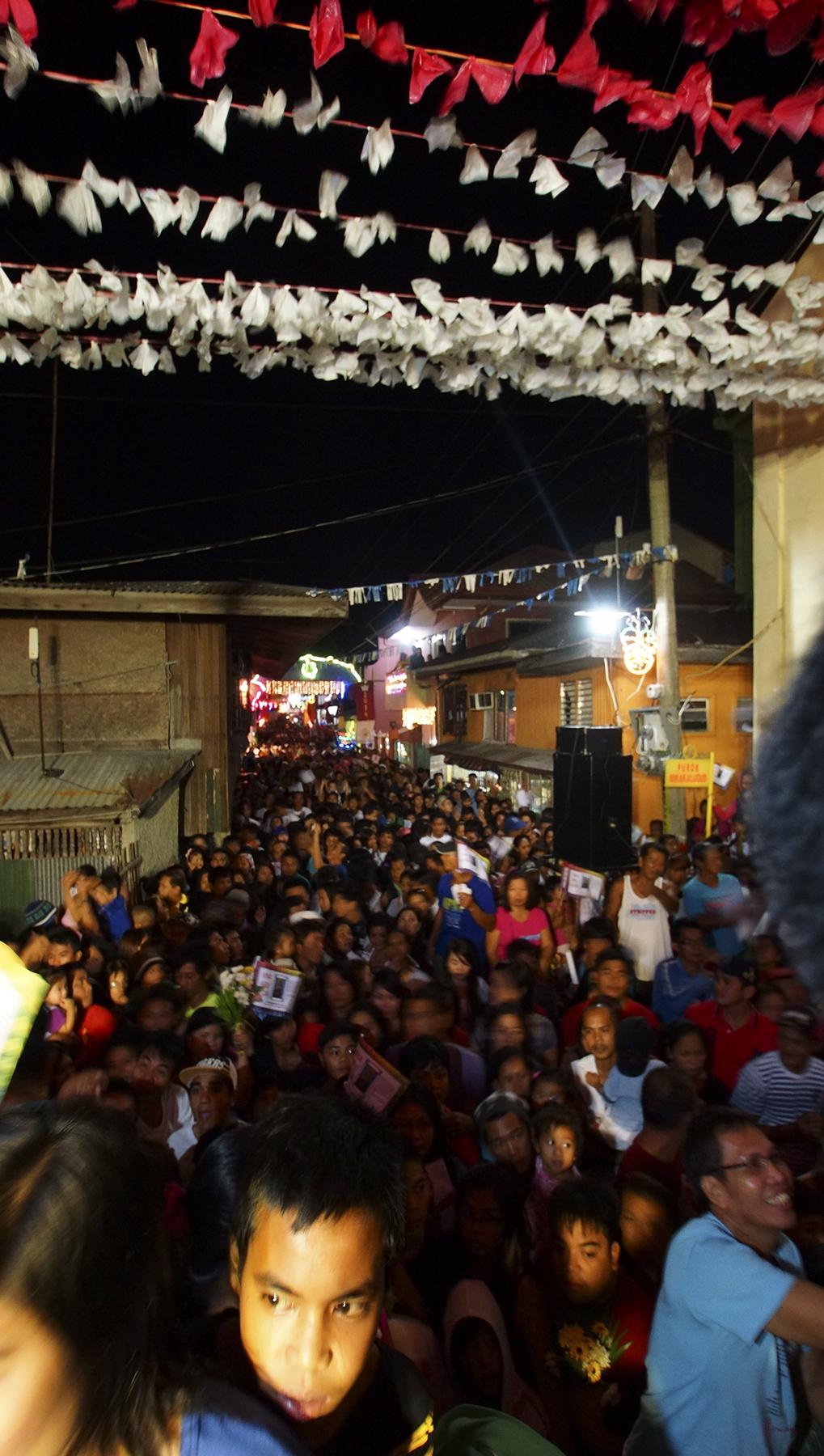Viva Apung Lucia! Pwera sakit! ( Hail St. Lucy! Away with illnesses!)
These words are key for the devotees of Apung Lucia, the patron saint of Sasmuan, Pampanga, during the Kuraldal Atlung Ari, the five-day festival in her honor.
For public school teacher Joy Salenga, the phrase is especially meaningful, as she believes that her wish for a child was granted through divine intervention.
“I got married when I was 35. And my husband and I were completely aware that at that age, it was already hard to conceive. But my yearly Kuraldal to Apung Lucia resulted in a miracle. Our 5-year-old now is a gift from the revered saint,” Salenga said.
For lifelong devotee Sol Pinlac, 65, her annual observance of the Kuraldal Atlung Ari has paid off as well. “Apung Lucia gave me another life. When we were poor, I asked sustenance to provide for my children so we could suffice. It was granted. Now, my diabetes was healed because of her divine providence,” she said.

Devotees like Salenga and Pinlac believe that your prayers—for a child, or for better health—may be granted if you perform the ritual dance Kuraldal during the festival. It is a common sight during the event to see small children lifted on their parents' shoulders to show that they are all God's providence.
True to its name, the Kuraldal Atlung Ari begins on January 6, the feast of the Three Kings. Rooted in a pre-colonial fluvial parade tradition that was combined with Catholic beliefs—“Kuraldal” comes from the Spanish word curar, which means “to heal”—the event attracts more than 15,000 devotees who believe that Sta. Lucia mediates on behalf of those who seek physical healing or children.
The power of faith and the influence of religion can also be seen on December 13, St. Lucy's actual feast day. A mass is followed by a batalla (a rhythmic musical piece) played by local bands in the early morning to signal the events that will transpire in the first week of January.
According to Sasmuan tourism officer Sonjai Salenga, at the start of January the hermanas (elders) accompanied by talatayids (guardians) start going house to house in uniform, dancing and swaying in unison along the narrow streets to ask “para sabun”—literally “for soap,” but it means to ask for donations to keep the Kuraldal Atlung Ari running.
On the eve of the festival, the Tayag-Garcia family of Barangay Sta. Lucia, known camareros (caretakers of the icons), start dressing the venerated icons for the processions.
The culminating mass, usually led by the Archbishop of San Fernando, is held on an elevated stage. During the mass, two icons are displayed on both sides of the makeshift altar. One of these is a small rebulto of Apung Lucia which, according to townspeople, is the one that casts miracles. After the mass, the attendees fall in line with their handkerchiefs and their children, all wanting to touch the old icon for what they believe are its healing and therapeutic properties.
Boy Manansala, the one who takes the handkerchiefs thrown at the icon by the devotees and wipes the icon for them, believes in the power of the handkerchiefs once wiped on the Apung Lucia rebulto. “For the longest time, my father was the one doing the wiping for the people below the stage. But when my daughter got a deadly disease which I thought would be the end of her, the wiping of handkerchief healed her. Viva Apung Lucia! Pwera sakit!” he said tearfully.
For Mayor Nardo Velasco, while the event showcases the intensity of people's beliefs, life does go on after the Kuraldal Atlung Ari. “Miracles should not only happen during the Kuraldal event because we have to face the real struggles and dances of life all-year round,” he said. “The real miracle is how we can suffice and survive another year round within the economic aspect of our lives beyond belief systems.” — BM, GMA News



